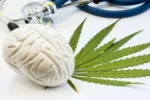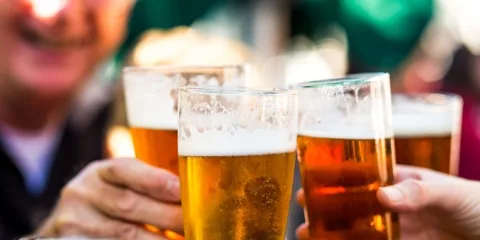Substance Abuse in College
![two-young-adults-on-laptops[1] Silvermist young adult drug and alcohol rehab](https://www.silvermistrecovery.com/wp-content/uploads/2021/01/two-young-adults-on-laptops1-150x75.webp)
While anyone, regardless of age, can find themselves using drugs or alcohol in an unhealthy and unsafe way, there’s no denying that this is a very common trend to see among college-age adults. In fact, many substances are abused at a much higher rate by this age group than any other.
For many, the newfound freedom of college gives room for self-discovery and exploration — both healthy and unhealthy. Unfortunately, some of this exploration often involves substance use; the thing to keep in mind, however, is that the more you know about these substances, the less likely you are to experiment with them and the more capable you’ll be to help a loved one should the need for intervention and/or treatment arise.
Addiction in college students
According to certain surveys and reports, “nearly half of participating college students met the criteria for at least one substance use disorder (SUD), while the 2019 Monitoring the Future survey found the highest rates of marijuana and some illicit drug use, particularly amphetamines, cocaine, hallucinogens, and MDMA, among those of typical college age (early to mid-20s).”
There are a number of reasons behind why substance use disorder manifests at this age, one of which is due to the peer pressure and “adventurous” environment of a college campus. However, not everyone who uses an illicit substance develops a substance use disorder, which begs the question — why is substance abuse so prominent amongst college students?
The answer lies in the influence of the drugs on the brain — “The adolescent brain is in a unique period of development at this age, leaving students at a heightened susceptibility to abnormalities on measures of brain functioning, including neurocognition and impulsivity,” both of which predispose one to the development of an addiction. Because of the changes the brain goes through during the early to mid-20s, addiction is more of a risk factor when substances are used recreationally.
Commonly abused substances in college
As previously mentioned, the most commonly abused substances by college-aged students include, “alcohol, cannabis, cocaine, prescription opioids, recreational drugs (eg, MDMA) and nicotine.”
Alcohol
From house parties and happy hours to cocktail events and social outings, alcohol is in no short supply at college. A common problem found with college-aged adults and alcohol is binge drinking, which the National Institute of Drug Abuse defines as the act of consuming five or more drinks in a row in a two-week time span.
Interestingly, the “perceived risk of alcohol consumption” is low in this age group, which is reflect in over 50 percent of participants in a survey who reported use. Those at highest risk of alcohol abuse in the college population include sorority and fraternity members, and those who had already been using alcohol in high school.
Marijuana (Cannabis)
Marijuana use among college students has significantly increased in the past few years, with the Monitoring the Future survey stating that 44% of those surveyed used it on a daily basis. This increase in use could be due to a number of factors, including:
- A lowered perception of the harms associated with marijuana use
- Having peers who use
- Struggling academically
- Having a pre-existing, unaddressed mental health disorder
Because of the legality of marijuana in most states, and the ease of acquiring the substance, it’s no surprise that this ranks as one of the top abused substances.
Cocaine and prescription opioids
Adderall and Ritalin are both medically prescribed prescription opioids to help with clinically diagnosed mental health disorders, meaning that using these substances in college is completely licit so long as one is prescribed to do so. The problem, however, arises when stimulants — be they legal prescriptions or illicit drugs like cocaine — are abused for the sake of increasing energy or improving studying.
Recreational drugs
Hallucinogen, LSD and MDMA usage has recently increased in college students. These substances are more often used at parties or events in order to enhance the overall sensory experience, and students “reported taking hallucinogens and MDMA for reasons such as curiosity, a desire to escape or to achieve a novel experience, and social pressures.”
Nicotine
Although the act of smoking cigarettes has declined, the use of e-cigarettes and vapes has increased, especially among college students.
According to the National Institutes of Health, “In 2017, 6.1 percent of college students and 7.9 percent of those not in college said they vaped nicotine in the past month, rising to 22 percent and 18 percent, respectively, in 2019. These increases in vaping marijuana and nicotine are among the largest increases in use for any substance reported by the study in its 45-year history.”
Help for substance use disorder
Substance use disorder, although very prevalent among college students, is not untreatable. Treatment centers, including Silvermist Recovery, have programs designed to help students address the stresses of college in a way that is healthy and balanced in order to minimize the risks/impacts of addiction and set them on the path of maintained sobriety long term.
If you or someone you know struggles with addiction, contact us online today or by calling (412) 561-9558 to learn more.






